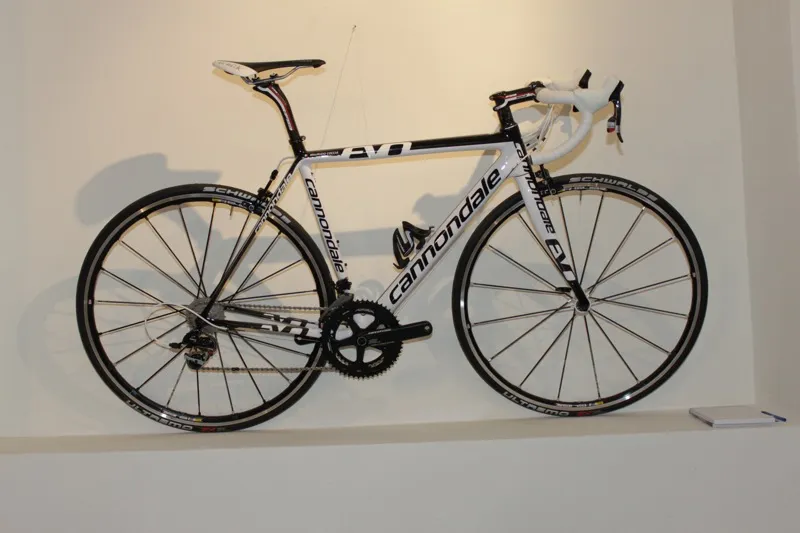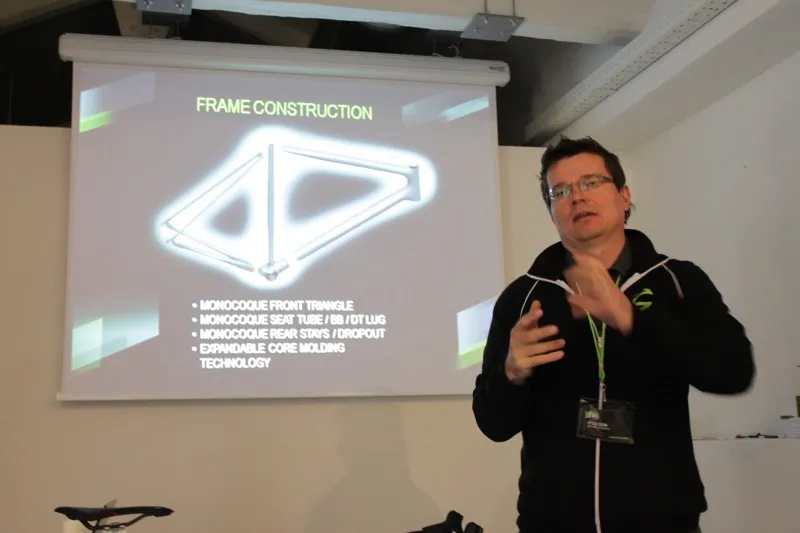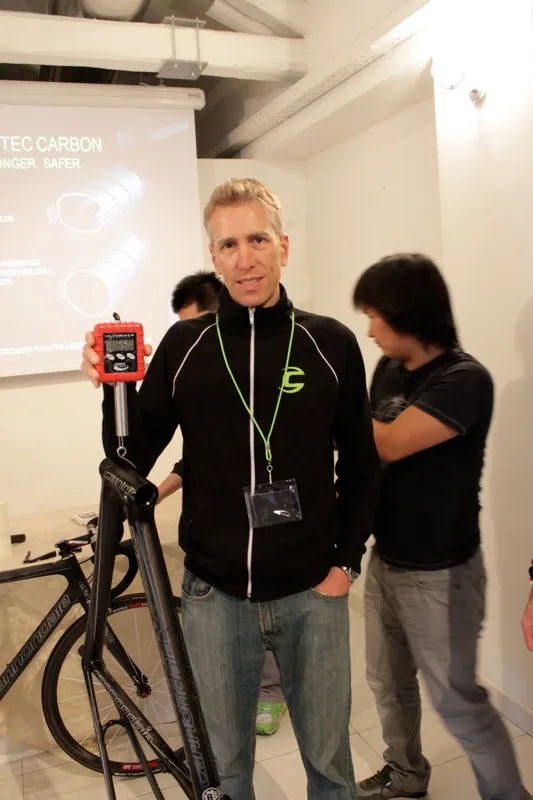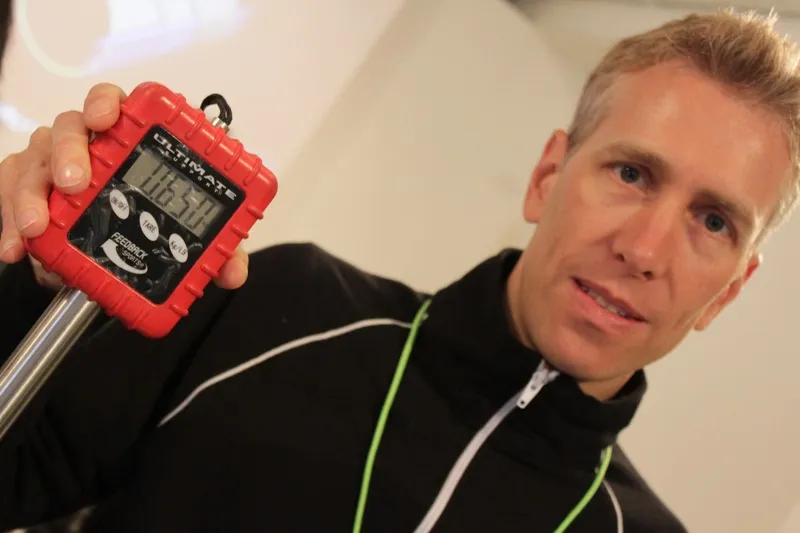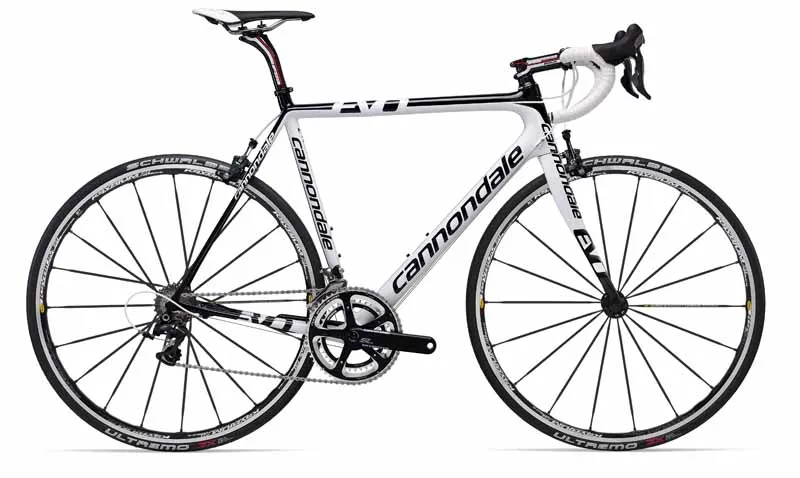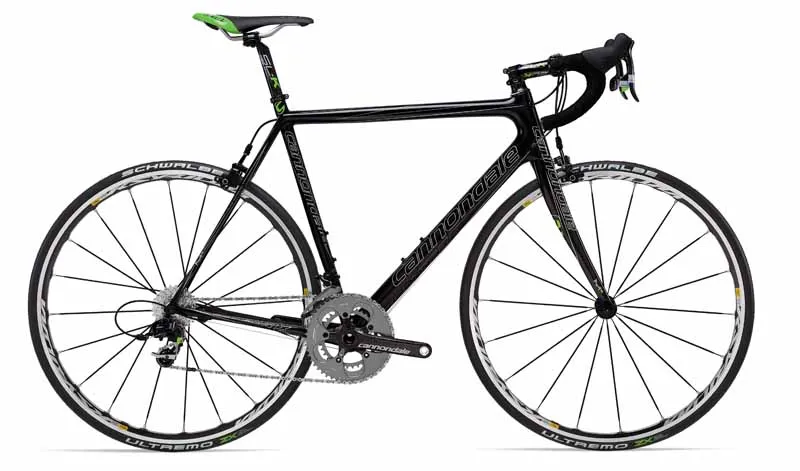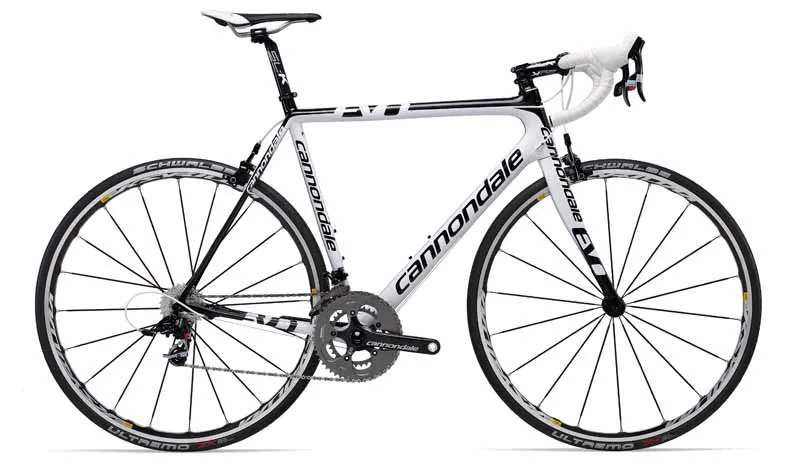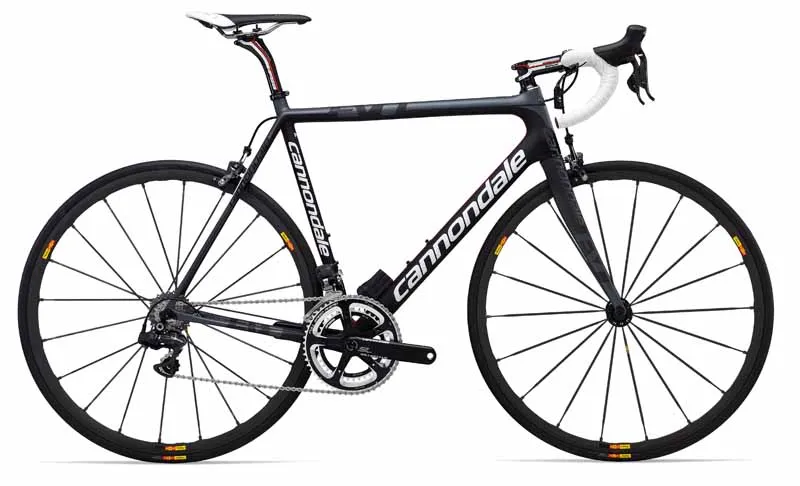Cannondale Bicycles launched their new SuperSix EVO chassis in Torino, Italy, today. The frame is said to meet the rigorous performance requirements of both Cannondale’s own test lab and the Liquigas-Cannondale professional cycling team, despite its extraordinarily low 695g frame weight (size 56cm).
The project is the culmination of two full years of development and the first major project road project from Cannondale to come from the collaboration with Peter Denk, an industry renowned carbon engineer and Cannondale’s new director of technology. Denk's first projects for Cannondale included the Flash and Jekyll carbon fiber mountain bikes, as well as the aluminum CAAD 10 road frame.
How did they do it?
The major weight savings have been achieved through the use of Cannondale's new carbon moulding technique. The frame's carbon fibre material is layed up around an EPS core (like the foam used in bicycle helmets). This core has detailed instructions on the fibre layup making an extremely precise assembly.
The rear triangle of chainstays and seatstays are moulded in one piece. Almost every other carbon frame available has the dropouts bonded into this structure whereas Cannondale have been able to use a continuous fibre structure. This, according to Peter Denk, allows them to choose the ideal mix of standard, high-mod, and ultra high-mod fibres for an optimum level of stiffness, whilst allowing for some movement vertically offering a smoother ride.
The added benefit of this technique means the tube thickness can be vastly reduced because bonded-in dropouts need thicker tubes to bond to. The Cannondale drop-outs weigh just 17g, with the average competitor's bikes' equivalent being 34g.
Cannondale also gave us the data from independent testing showing the SS Evo to have a class-leading stiffness to weight ratio, outstripping all of its competitors from the likes of Cervelo, Trek, Specialized, Storck, Canyon and more.

Sub 5kg bike!
Light but strong?
We’d be concerned that a bike that gets down to a weight this low is going to be fragile, but Cannondale claim that the EVO’s complex layup and mixture of fibres actually makes this one of the strongest frames they have ever made. Even to the point of providing data from destructive tests showing the Evo to be stronger than their own super tough aluminium CAAD9 road frame.
Design aims
The aims of the design have been: lightweight, stiffness, smooth riding, and finally a reduction in drag. The drag reduction has been achieved not by using aero profiles like the current aero specials just launched from Specialized and Scott, but rather in reducing tube diameters and frontal area. The headtube has gone from the massively oversized 1.5” bottom race down to a slimmer 1 1/4” item. The downtube has been slimmed by 20% and the fork by 11%.
Cannondale have taken inspiration from the world of Formula 1 with its Speed Save concept. F1 car suspension isn’t to aid driver comfort but rather to aid traction and handling. Speed Save is Cannondale's take on this for bikes.
The fork and rear stays work to create movement to take the sting out of the road. The rear chain and seat stays have flattened centre sections, and this change in shape along with the carbon layup offers a small amount of movement vertically. This allows the bike to ride smoothly over rougher surfaces and it's claimed this gives a smoother power transfer to the rear wheel making for a more efficient ride.
Up front the forks dropout is offset by setting the axle back from the fork end. This means a shallower continuous curve can be made. Offsetting keeps the steering and handling sharp whilst giving more movement fore and aft in the fork blades, all aiding its bump smoothing abilities.
Giro debut
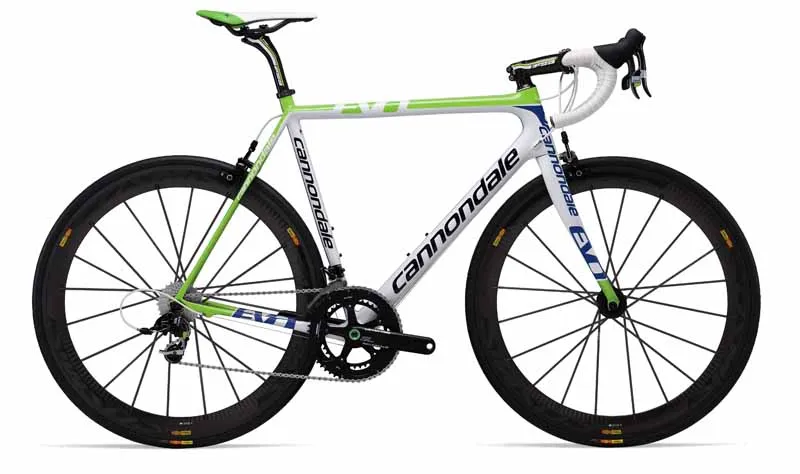
SuperSix Evo Team
The SuperSix Evo will be debuting under the seats of team Liquigas at the Giro d'Italia starting Saturday and the bike will be in the shops this June. Details of the ranges pricing are a little thin on the ground but we do know the line-up.
Heading the list is the SuperSix Evo Ultimate. This gets the 695g ultimate frame (the weight is kept down by the use of lightweight paint) shod with DT Swiss RRC carbon tubular wheels, Zero G brakes and SRAM Red. We put this one on the scales and it tipped them at a frankly astonishing 4.9kg.
Next in line is the Team, with Mavic Cosmic Carbone SLRs and SRAM Red (in green to match the Liquigas team colours) and weighing in at 6.4kg. The frame is a little heavier due to the extra paint of the team livery with its frame weight rising to 727g. A Di2 equipped version will also be available weighing in at the same 6.4kg.
Dura-Ace is next in line with its own black and white finished frame, weighing 750g.
Entry into the EVO range starts with the SRAM Red 750g framed version built with FSA’s SLK range of bar, stem and post and Ksyrium Elite. Expected price for this model is around €4300.
Cannondale Evo v Cervelo R5ca
With the new SuperSix Evo, Cannondale have created what is now the world’s lightest production frame at 695g. That means it out does the remarkable Cervelo R5ca by just one gram. Coincidence? We think not. Especially as Cannondale also showed us a development Evo frame which surpasses all of their in-house testing plus independent strength tests. That one weighed in at just 630g (56cm) but as it would be so expensive to produce it could only occupy the same sort of market as the R5CA’s £7.5k arena, we wouldn't be massively surprised if a special addition ultra light Evo arrived sometime in the near future.
Check back to BikeRadar for a first ride review of the new bike.
